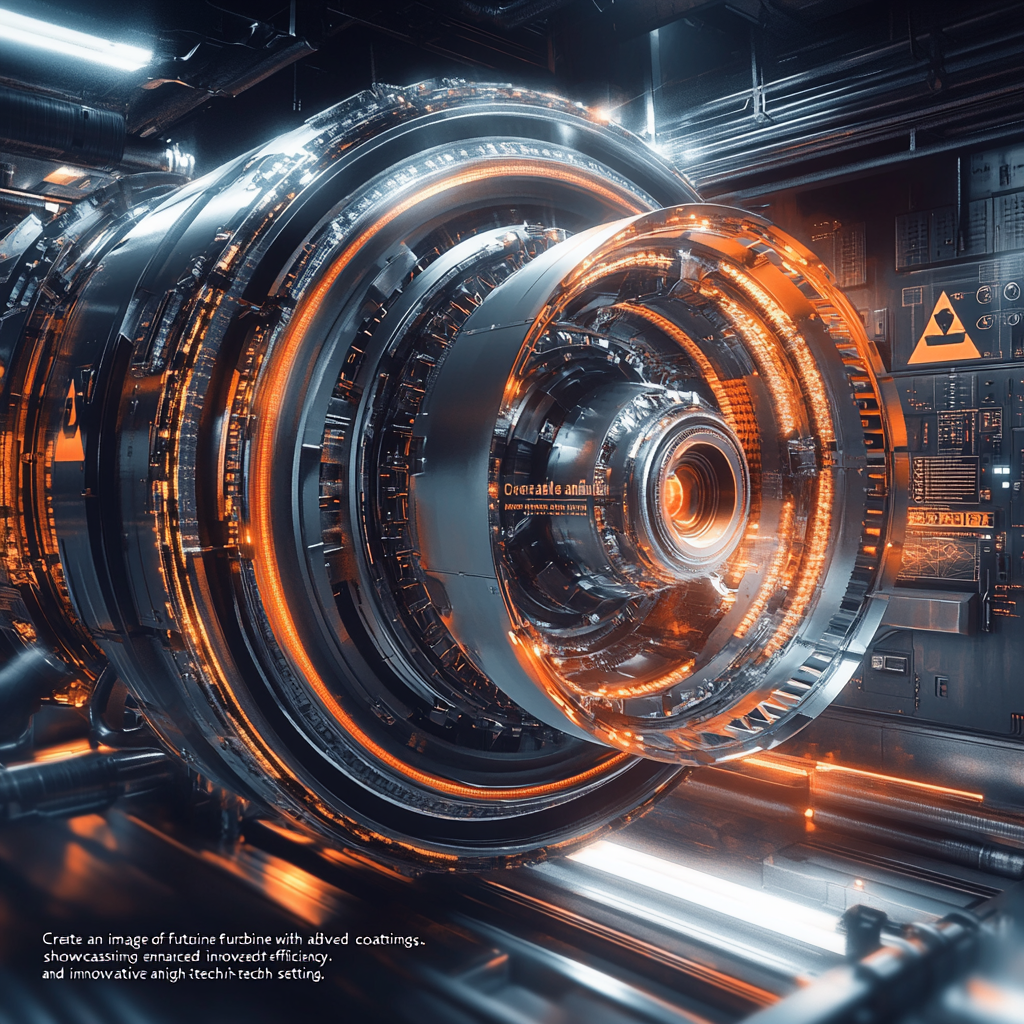
Revolutionary Coating Enhances Turbine Engine Performance
In the grand arena of high-performance turbine engines, where precision, efficiency, and uncompromising temperatures collide, a delightful and unforeseen twist is happening. A new protective coating is set to revolutionize our understanding of how engines function. And when I say revolutionary, I mean it—this isn’t just about making things run a bit better. No, this is about turbocharging performance, longevity, and even helping to rescue our dear planet from the clutches of pollution.
Now, let’s get real here. If you've ever taken the time to ponder the mechanics behind gas turbine engines, you’ll know they’re the unsung heroes behind industries like aviation, energy generation, and defense. They operate under stress, pushing boundaries and heat levels that would make ordinary materials wither away like a snowflake in the Sahara. But the demand for colossal efficiency is escalating. We need to reduce fuel consumption, lower emissions, and increase power output—and fast! The truth is, these engines are like a marathon runner in a sauna: great potential, but that heat is relentless and harsh.
So how do we combat this? Enter advanced protective coatings into the chat. These aren’t just your average, run-of-the-mill layers of paint. We’re talking about cutting-edge materials that will redefine what we thought possible in high-temperature applications. Buckle up, because we have some incredible advancements that will leave you both intrigued and impressed.
Let’s kick this off with the timeless champions of high-temperature resilience: nickel-based superalloys. For years, they’ve been the gold standard, enduring temperatures that would make even the Sun envious—a staggering 2,200°F, which is essentially a barbecue for most materials. But in the pursuit of greatness, we’re now layering these with advanced ceramic composites. Trust me, when you put those two together, it’s like mixing chocolate and peanut butter; a match made in engineering heaven. These new coatings provide durability and thermal resistance that’ll keep turbine components strutting their stuff, even in the most blistering of conditions.
Now, shifting gears, let’s talk about niobium-based alloys—a tantalizing research avenue being explored, particularly by the dear folks over at GE Research. Imagine this: materials designed to withstand heat levels soaring up to 1,300°C (or 2,372°F for those who don’t want to do the math). Such prowess doesn’t come without finesse. This coating system comprises a bond coat that flat-out refuses to oxidize and a thermal barrier coating that would make transitioning from summer to winter seem less drastic. With these innovations, our turbine engines aren’t just surviving; they're thriving, and doing so for upwards of 30,000 hours. Mind-blowing, isn’t it?
But wait, the plot thickens. Picture rare Earth oxide coatings stepping onto the stage—now that’s a headline! Developed by brilliant minds at institutions such as the University of Maryland and the University of Virginia, these coatings can allow engines to prance at dazzling temperatures of up to 3,300°F. How do they achieve this? Through traditional air plasma spray techniques or snazzy new slurry-based processing. Giving traditional methods a playful nudge for cost-efficiency and reparability is just the cherry on top.
Now, let’s dive into how these coatings strut their stuff in an engine context. Enter thermal barrier coatings (TBCs), the rock stars of the turbine world. Applied to the metal components that bear the brunt of extreme conditions—think blades, vanes, and afterburners—TBCs serve as the superhero’s armor, providing insulation that allows engines to crank up those gas temperatures without causing catastrophic failure. A crucial aspect of engines since the late 1980s, these coatings have changed the game and boosted efficiency while extending durability.
Speaking of protecting the champions of the gas turbine ecosystem—meet the Environmental Protection Coating System (EPCS). Developed by Raytheon Technologies Research Center, this marvel is your best friend in the arduous quest for longevity in refractory metal alloys (RMAs). By preventing those pesky combustion gases from reaching and damaging the underlying alloy, EPCS plays the unsung hero, ensuring that ultra-low thermal conductivity shields said alloys from surges in surface temperatures. It's like a security blanket, but for your engine’s vital parts.
So, what’s in it for us? Let’s take a moment to marvel at the benefits:
-
Skyrocketing Efficiency: Those new advanced coatings allow engines to operate at higher temperatures. Essentially, they juice up power output and efficiency, and let me tell you, simulations from the University of Utah suggest an eye-popping 6% increase in turbine output—we're talking serious gains!
-
Superior Durability: The architectures of these coatings facilitate thermal resistance and oxidation protection, extending the life of engine components like a well-aged bottle of wine. Fewer repairs mean lower maintenance costs and less downtime. Bonus points, anyone?
-
Environmental Gold Star: Increased efficiency equates to reduced fuel consumption and a precious dip in emissions. What’s not to like about contributing to a greener Earth?
- Economic Boom: The gas turbine industry is poised to flourish, and as these innovative materials pave the way, they are undoubtedly a boon for meeting upcoming demands while keeping our environmental footprint in check.
In conclusion, we are at the dawn of an enthralling era for turbine engines, heralded by cutting-edge protective coatings. These advancements are not just upgrades—they represent a thrilling leap toward higher efficiency and a greener future. With ongoing research pushing the limits, we are bound to witness game-changing designs that could redefine entire industries.
So hey, ever wondered about the latest scoop on advanced materials and coatings for turbine engines? Subscribe to our Telegram channel and dive deeper into the fascinating universe of innovation! Join us at @channel_neirotoken, and let’s keep the conversation going about the future of energy and aviation that’s perched right at our fingertips!

